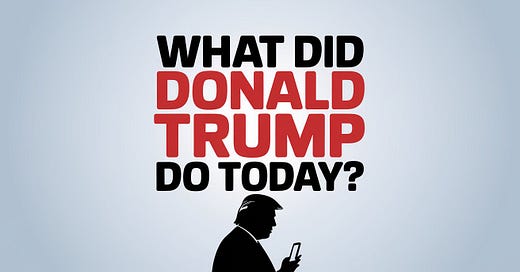Donald Trump’s recent cabinet meeting at the White House served less as a venue for policy discussion and more as a display of political theatrics and loyalty. Characterized by exaggerated claims and sycophantic praise from cabinet members, the meeting functioned as a campaign-style event where Trump positioned himself as the savior of American industry and sovereignty. He presented a distorted economic narrative, asserting there was “no inflation” and touting vague revenue figures while celebrating tariffs as both economic weapons and nationalist tools—even as he contradicted this stance by supporting foreign shipbuilding. Federal institutions were portrayed as corrupt, especially universities and regulatory agencies, with billions in funding withheld from elite schools and climate regulations slashed. Officials echoed pseudo-scientific claims and undermined public health agencies like the CDC and NIH in favor of ideological targets, including SNAP benefits and fluoride use.
The meeting also highlighted how government agencies are being weaponized for political ends. The Justice Department was framed as both a crime-fighting entity and a defender of Elon Musk, while immigration plans promised mass deportations under dehumanizing language. Student activists were labeled threats, and intelligence agencies were assigned to pursue internal “weaponization” narratives through the selective declassification of sensitive files. Trump’s fixation on China drove much of the rhetoric, culminating in the declaration of a “trade emergency” and a barrage of unsubstantiated claims, including accusations that China sent soldiers into Ukraine. His remarks suggested a readiness to blur legal boundaries, including using campaign-funded lawyers in trade deals.
This performance-based governance extended beyond the cabinet meeting. The administration escalated its protectionist agenda through a sweeping executive order that dramatically raises tariffs on Chinese imports and invokes emergency powers meant for national security crises. This move sidesteps congressional oversight, risks economic retaliation, and jeopardizes global trade norms, all while promoting a transactional foreign policy that rewards countries aligned with Trump’s geopolitical narrative. The order reflects a shift from multilateral cooperation to binary, loyalty-based diplomacy, destabilizing U.S. credibility and global supply chains alike.
Meanwhile, the administration suffered a legal defeat as the Supreme Court ruled it must facilitate the return of Kilmar Abrego Garcia, a man wrongfully deported to El Salvador in defiance of court orders. The ruling underscored major due process failures in Trump’s immigration agenda and reaffirmed that legal violations by the executive branch remain the government's responsibility to correct—especially when they result in human rights risks abroad. In another court development, a judge allowed a defamation suit against Trump to proceed over false claims he made about the Central Park Five, emphasizing the legal system’s continued pushback against misinformation.
The administration’s aggressive stance toward universities also intensified, with over $1.7 billion in federal funds frozen for Cornell and Northwestern amid investigations tied to civil rights and campus protests. This follows similar actions against other top schools and includes visa revocations and deportation proceedings for student demonstrators. Critics argue the campaign targets pro-Palestinian activism and DEI initiatives under the guise of combating antisemitism, raising concerns over free speech, academic freedom, and discriminatory enforcement.
Finally, a State Department press briefing by Tammy Bruce mirrored the broader administration’s tone—disorganized, politicized, and lacking in substance. Her remarks downplayed serious geopolitical issues, replaced clarity with ideological spin, and avoided accountability on key questions about U.S. policy in the Middle East and beyond. The briefing, like the cabinet meeting, reflected a government more invested in spectacle and narrative control than in transparent or competent governance.













Share this post